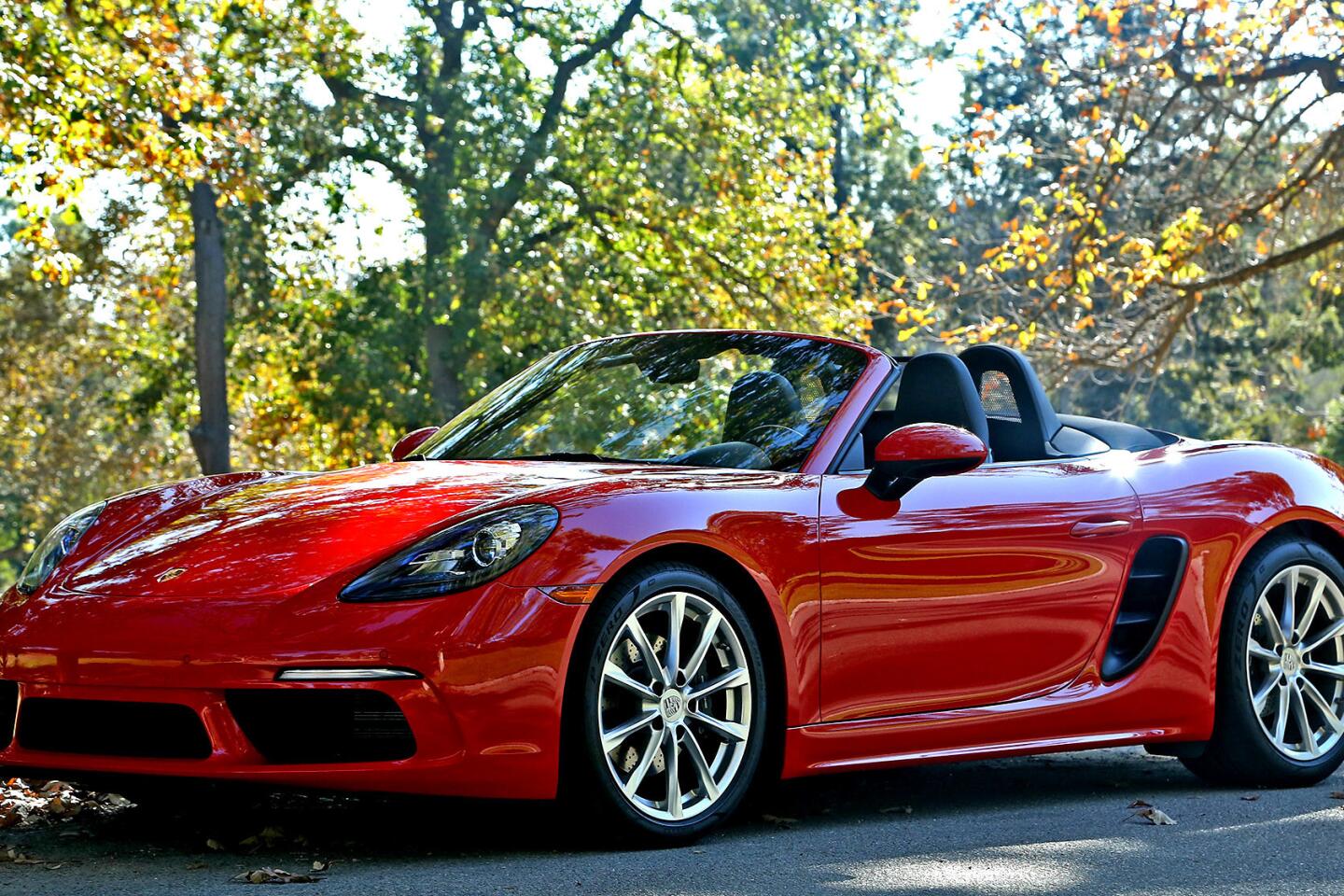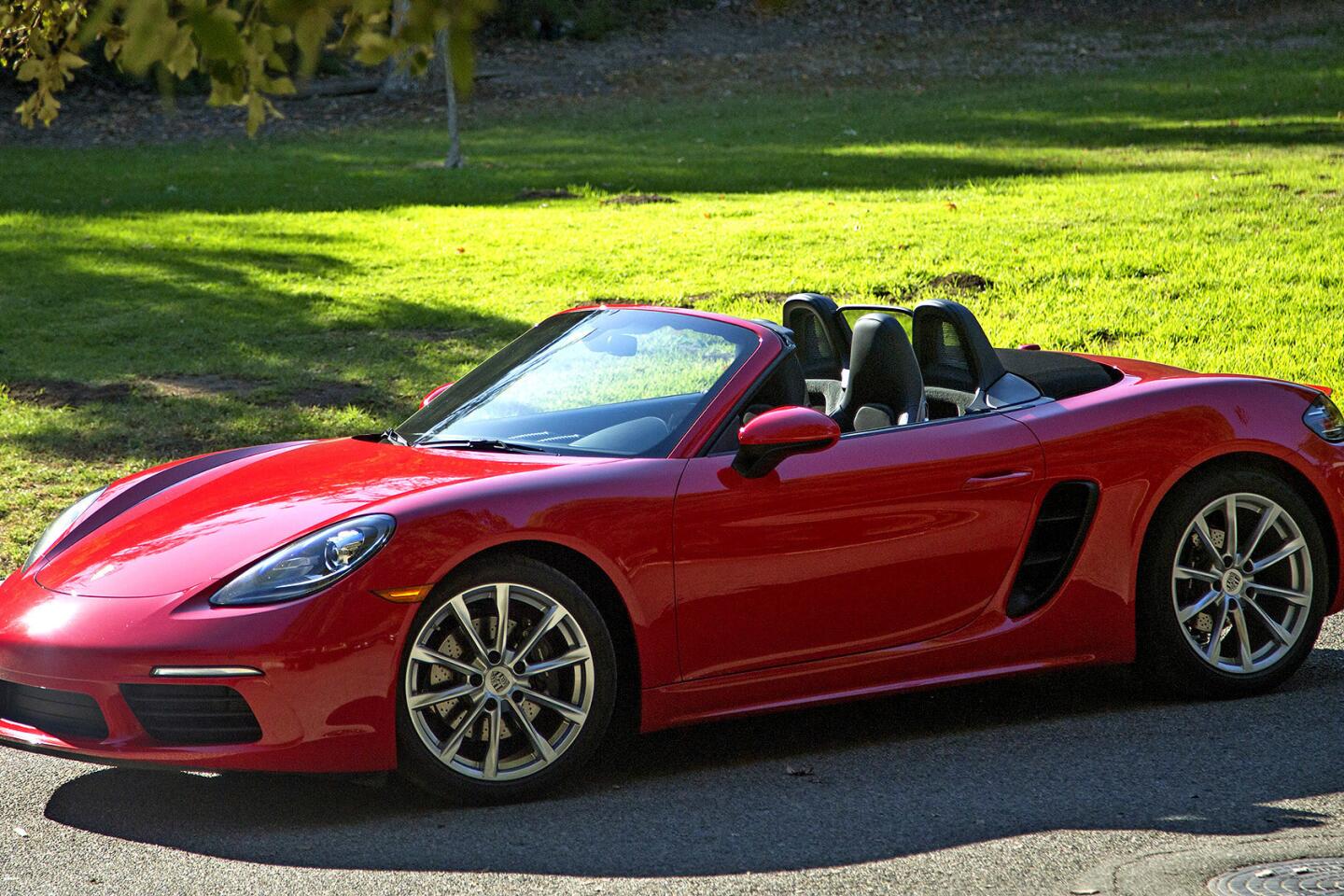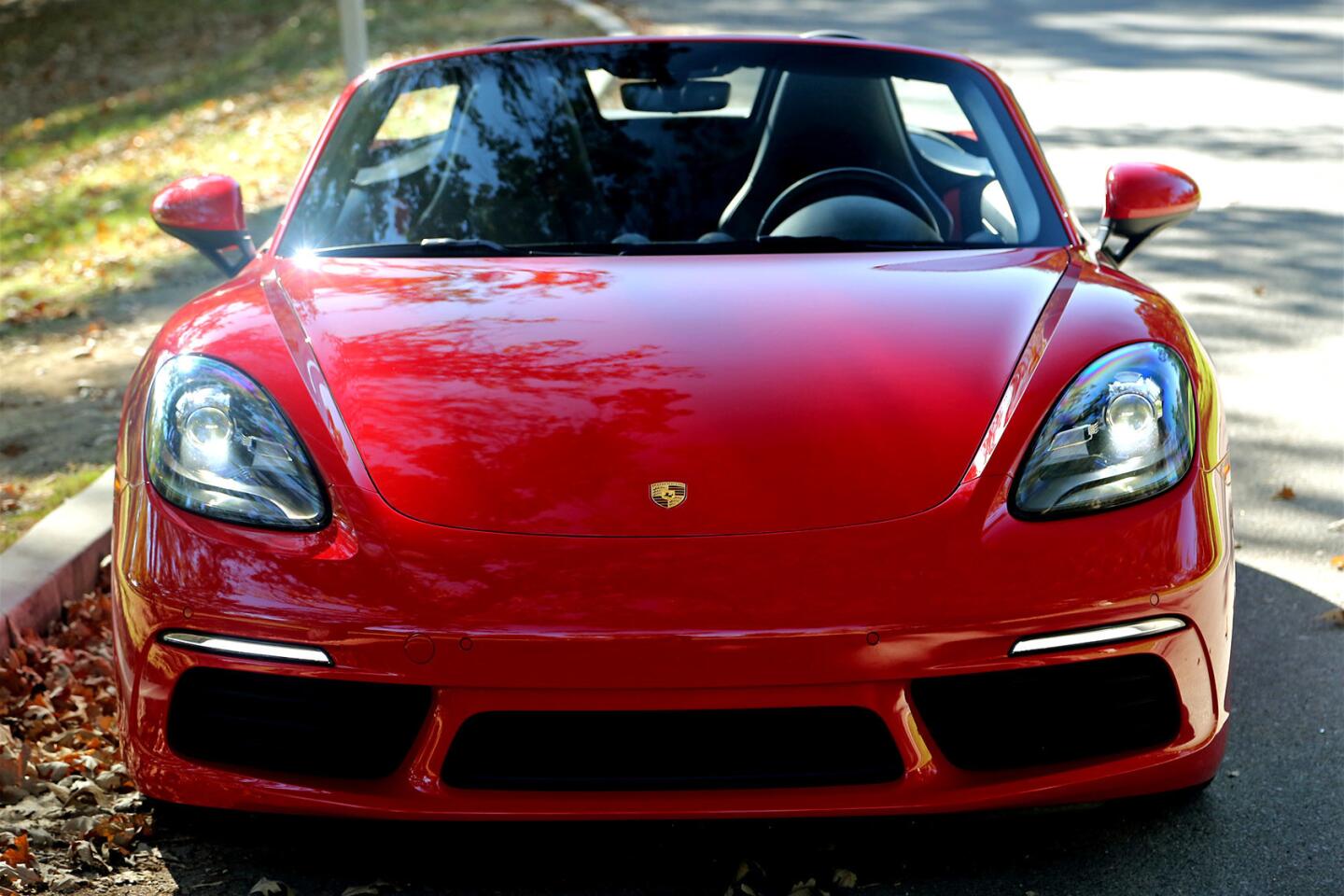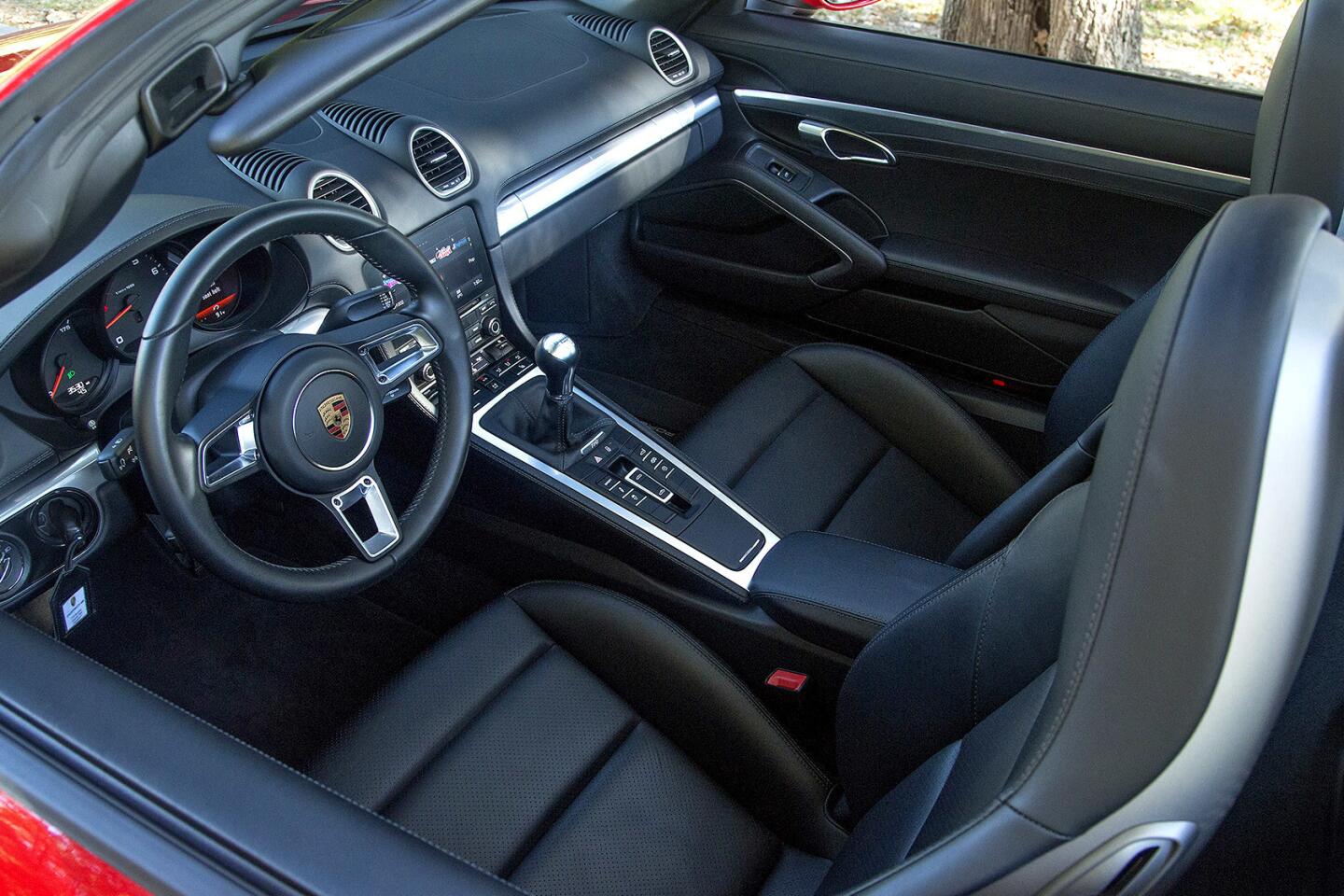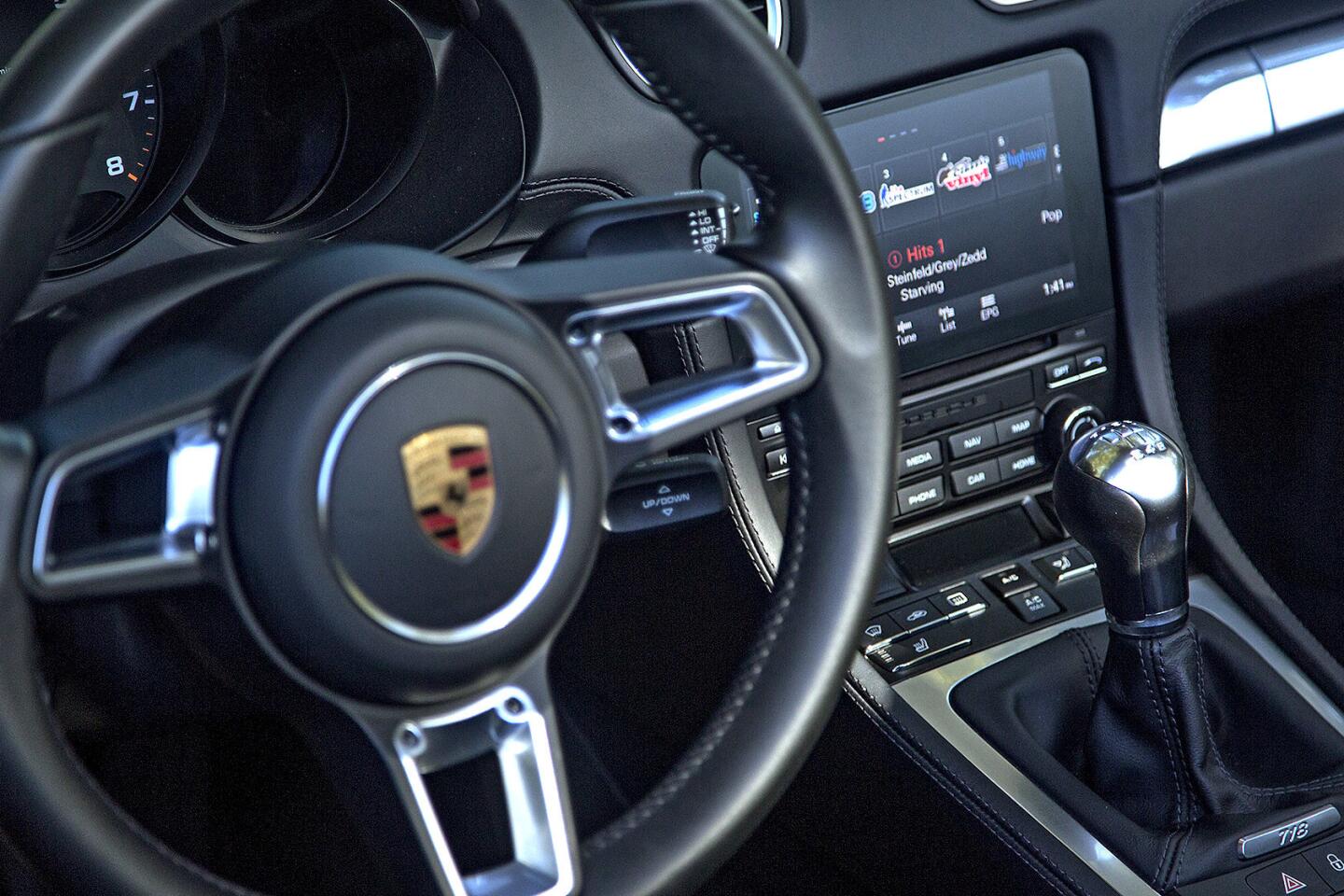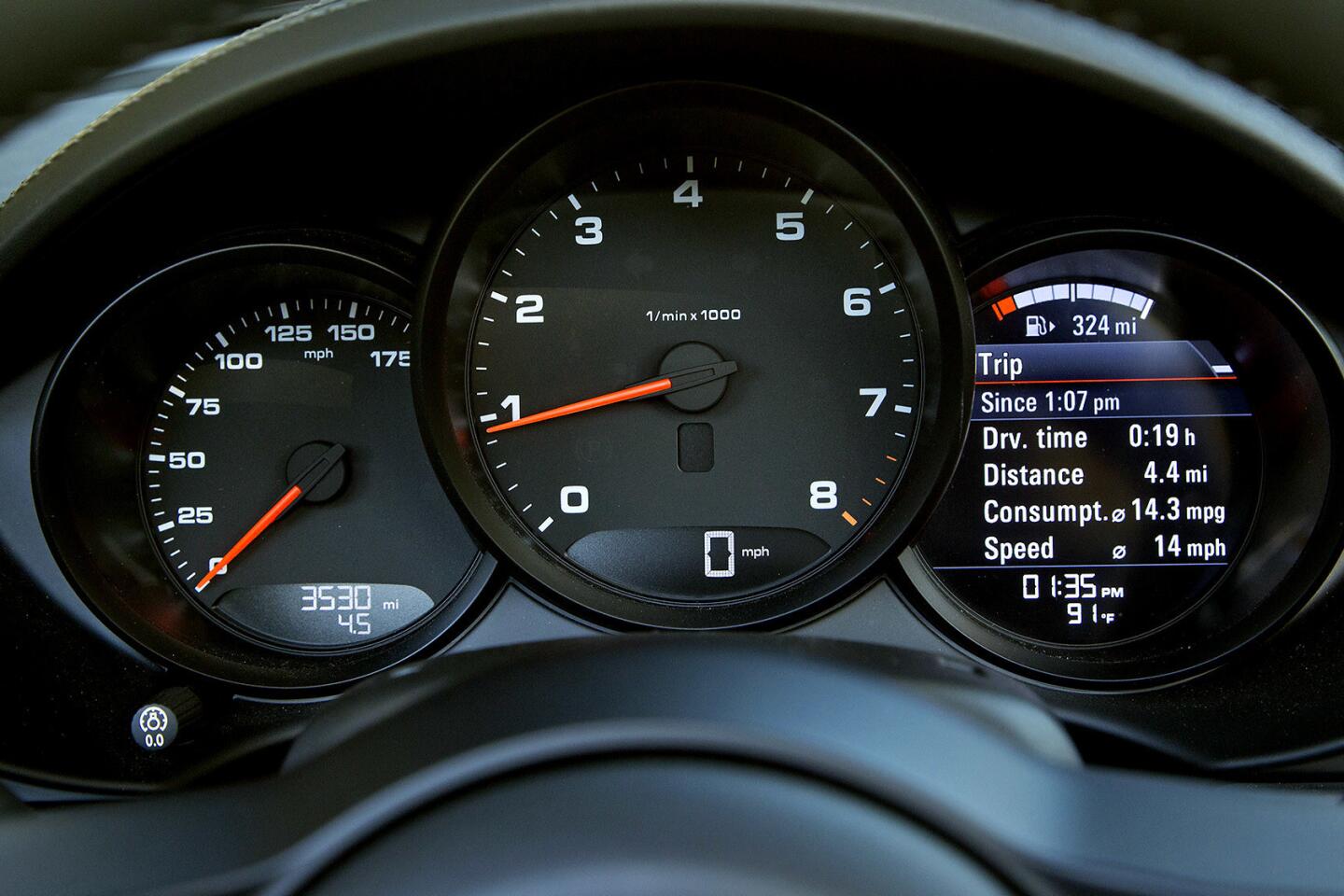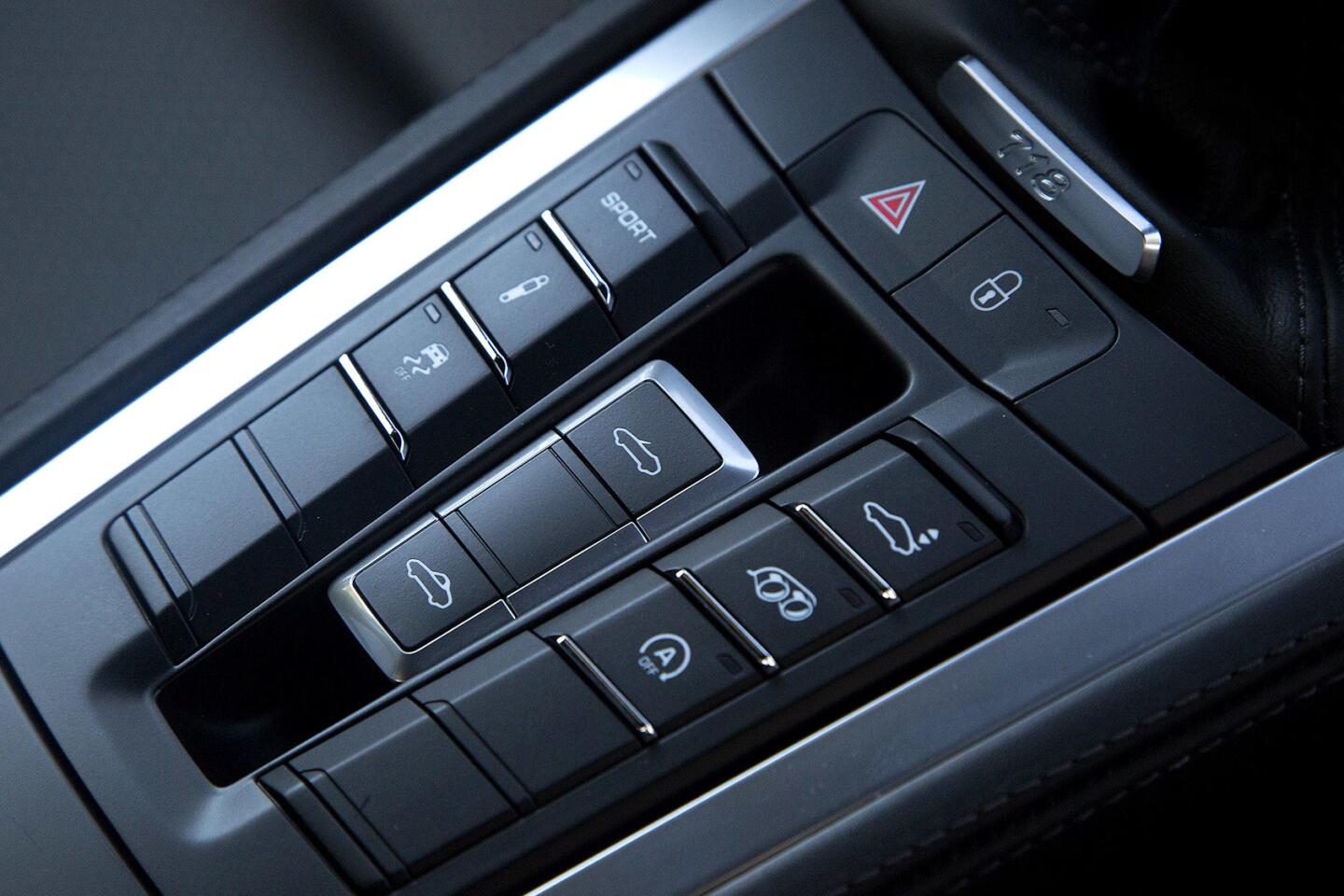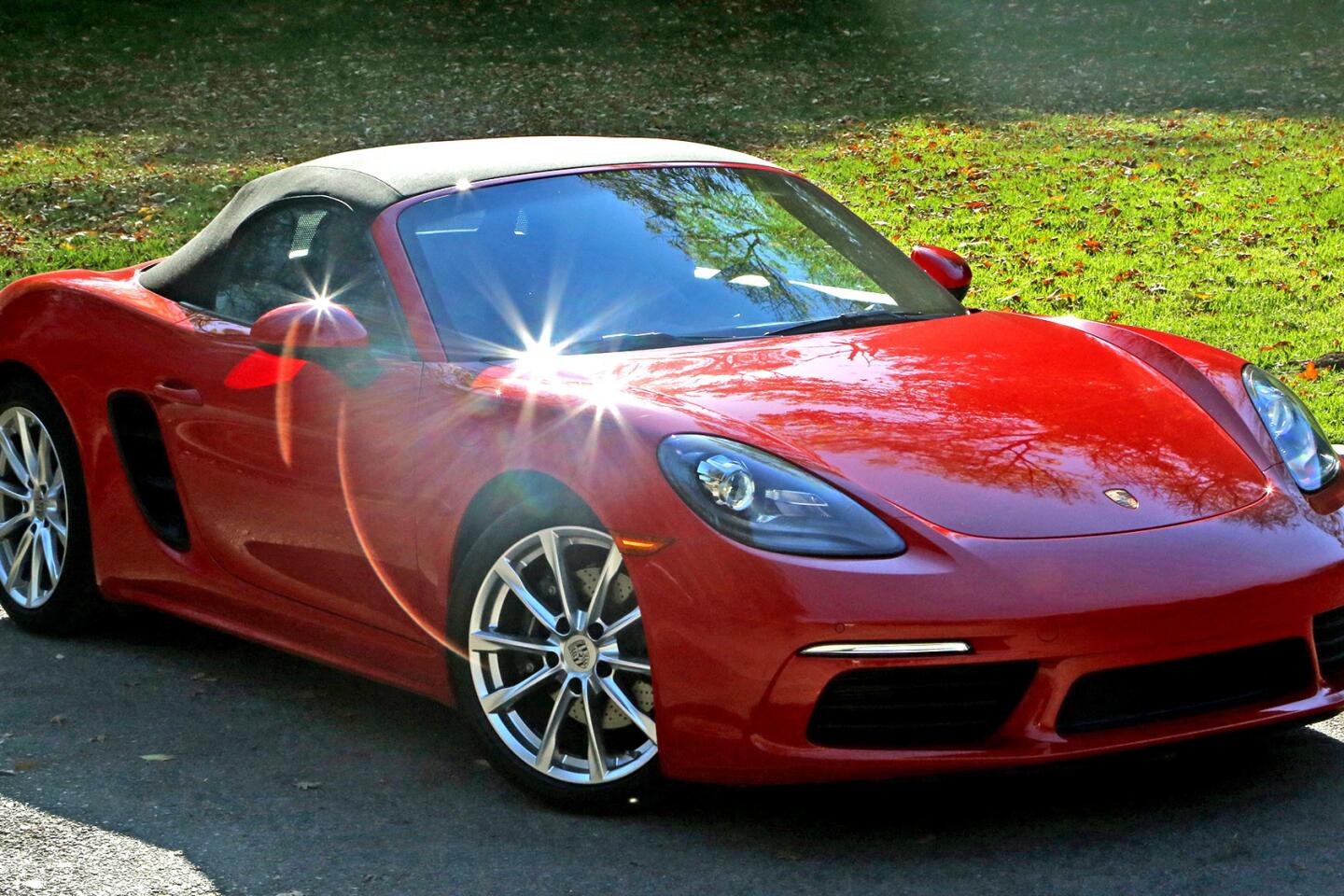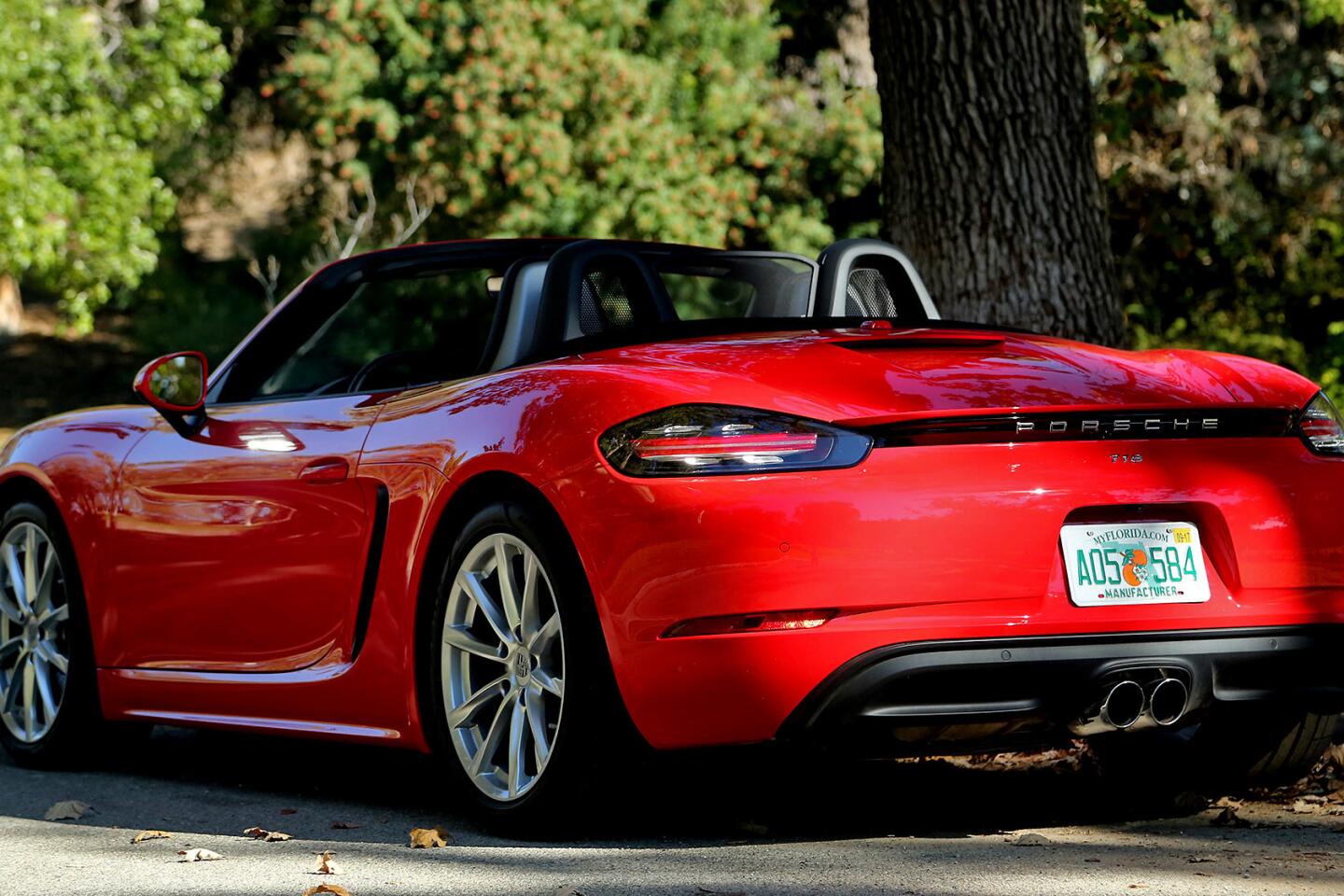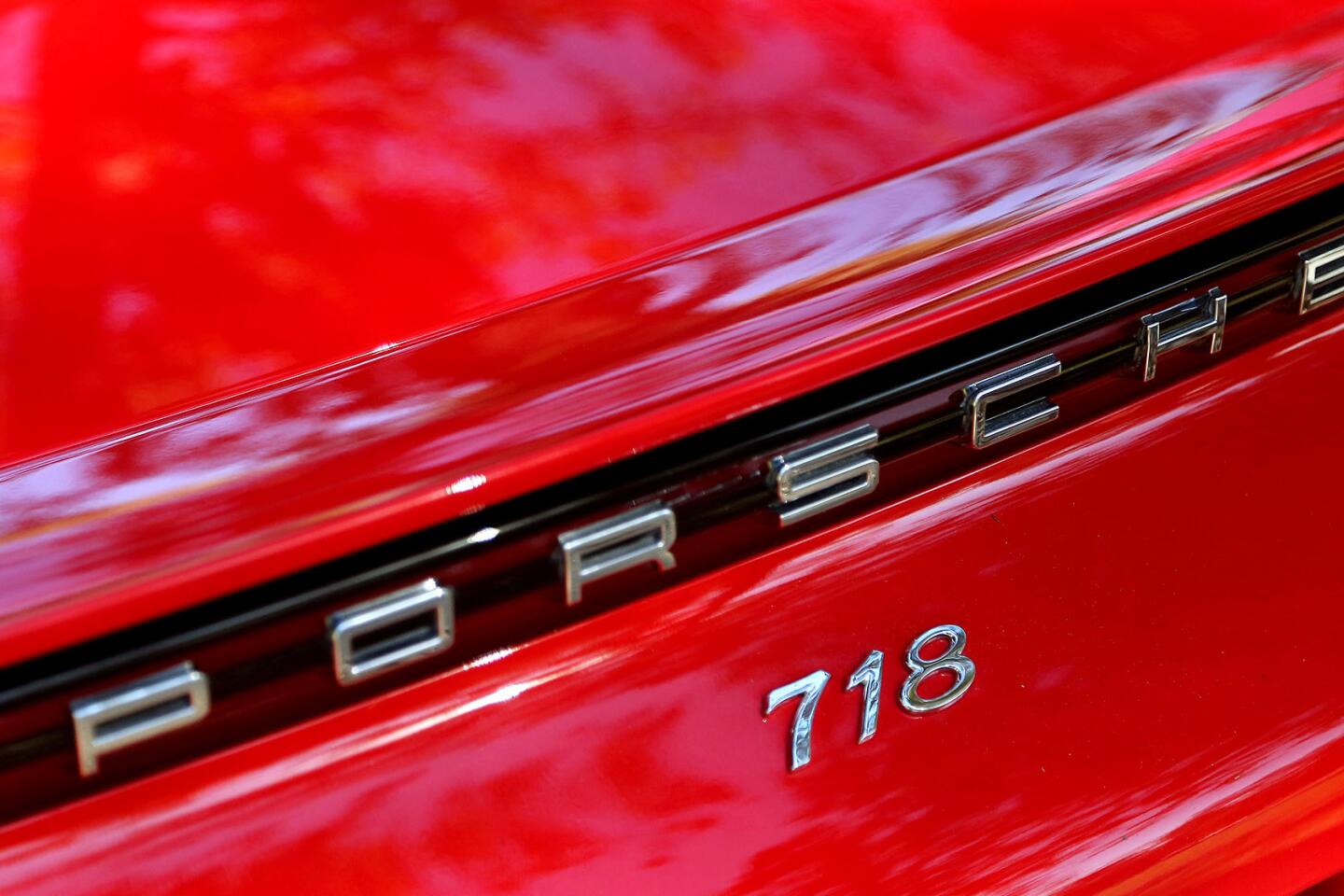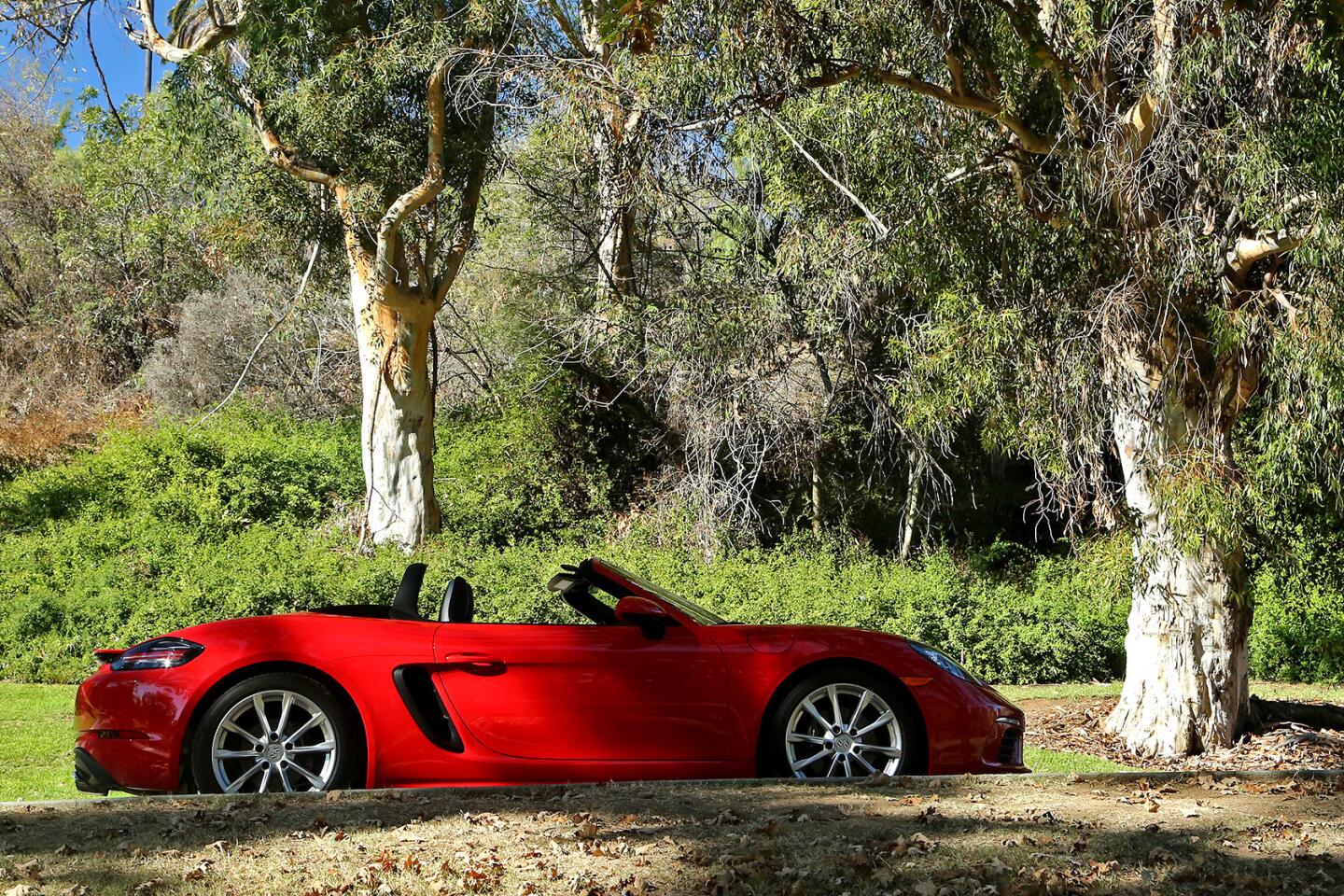Review: Porsche’s new Boxster is fast, fun to drive and, for a Porsche, affordable
- Share via
Porsche has unboxed a new Boxster. The 2017 model has a smaller engine and weighs less, but is quicker and more powerful.
Like earlier versions of this entry-level sports car, the new iteration is fast, fun to drive and, for a Porsche, affordable.
Known as the 718 Boxster, the new edition is powered by a 2.0-liter flat four-cylinder engine that is turbocharged and makes 300 horsepower and 280 pound feet of torque.
That’s a step up in power — 35 more horsepower, Porsche says, and 36% more torque, than the 2.7-liter six-cylinder engine it is replacing.
Thank turbocharging — new here to the Boxster line — for the pumped-up power. The addition of that technology makes the new Boxster quicker too. The 2017 gets from zero to 60 mph in 4.9 seconds, faster than the 5.5 seconds required to move the 2016 that far. Top speed has gone up as well, to 170 mph from 164.
Porsche boasts the new Boxster even represents a price reduction because the entry-level 718 is comparable to the 2016 Boxster S — slightly less horsepower but considerably more torque, and with the same braking system — but is $8,000 cheaper.
The 2017 version has improved handling, thanks in part to steering elements borrowed from the 911 Turbo.
As it has done with the bigger brother 911, Porsche has eliminated turbo lag from the 718. The power comes on smoothly, without the brief delay and resulting neck-snap common to some turbocharged sports cars.
The handling is a little more nimble than the 2016 version. Sticky in the turns, it feels born for the Southern California canyons.
Like the 911 line, the 718 Boxsters all come with a choice of PDK automatic transmission or manual six-speed stick shift.
I got the stick and liked it a lot. The clutch feel was soft but firm, and the gearbox felt tidy and tight. A “hill hold function” — which acts like an automatic, electronic emergency brake and prevents the car from rolling backward when it is stationary — makes the manual labor less taxing.
During the week I drove the 718, I gradually became less aware that I was working the third pedal at all or that my right hand was busier toggling through gears than texting.
But I was aware that I was having fun. It felt so good, in Sport mode, with the Sport exhaust engaged, that I probably would never drive it any other way. That won’t help with fuel economy, but that’s not why anyone buys a Boxster, is it?
Unlike the similarly sized soft-top sports cars recently introduced by Fiat and Alfa Romeo, the 718 uses a motor to make its convertible top go up and down. A small screen behind the seats helps manage air flow into the cabin, but you’ll still need a cap to keep your coif intact if you go onto the freeway.
At freeway velocity, thanks in part to the six-speed transmission, the 718 purrs. I clocked it at 75 mph, ticking along at a mellow 3,500 rpm.
The storage capacity on the 718 is pretty good — since the mid-engine design allows for trunks in the front and the back of the car. It might not accommodate your golf bag, unless you’re a miniature maven, but it will take a pair of overnight bags.
Some Porsche purists have sniffed at the Boxster since its 1996 debut, dismissing the mid-engine two-door as too feminine, too unrefined or simply too slow to be taken seriously.
Nevertheless, the company has done well with this model. This year, the company said recently, more than 10% of all Porsches sold in America were Boxsters or Caymans, the hardtop version of the Boxster.
Admittedly, it’s no 911. Even the more powerful, more expensive 718 Boxster S, whose 2.5-liter turbo four-cylinder engine makes 350 horsepower and 309 pound feet of torque, and goes from zero to 60 in 4.4 seconds, pales beside the six-cylinder 911s.
But scooting around town — because I’m not a race car driver, and I don’t live near a track — I didn’t often miss the 911’s bigger engine.
I did miss some of the amenities that make the German brand’s other automobiles so alluring. This is still a down-market Porsche. So the seats must be adjusted manually. Also, there is no hydraulic mechanism to raise and lower the front end, which sits 10mm lower than the 2016 Boxster. That means most drivers will be trying hard not to scrape their chins on steep driveways.
(To soften that blow, literally and figuratively, Porsche has thrown in as standard equipment the front and rear Park Assist warning system that was an option on the 2016 Boxster.)
And, like the 911s, the 718 is equipped with cup holders that swing out from the dashboard, where they hover, ready and waiting to spill boiling beverages into your lap, or the HVAC system, at the first pothole.
The model I tested had some upgrades, among them Boxster S wheels, an extended range gas tank, Porsche’s Torque Vectoring and Suspension Management systems, sport exhaust and a leather interior.
Those added considerably to the base price, driving it from just over $57,000 to just over $73,000.
At the base MSRP, the 718 Boxster and its hardtop sibling, the 718 Cayman, which is about $2,000 cheaper, are still Porsche’s least expensive sports cars. (The Macan SUV, at a base MSRP of $47,000, is its lowest-priced vehicle, and its best-selling.)
That doesn’t exactly make it a bargain. But the least expensive 911 costs almost twice as much. As an entry-level, starter Porsche, the 718 Boxster is hard to beat.
2017 Porsche 718 Boxster
Times’ take: Good things come in small packages
Highs: Higher power, lower weight, bigger handling
Lows: Entry-level model feels cheap in spots
Vehicle type: 2-door, 2-passenger convertible
Base price: $57,050
Price as tested: $73,040
Powertrain: 2.0-liter turbocharged 4-cylinder engine
Transmission: 6-speed manual
Horsepower: 300
Torque: 280 pound-feet
EPA fuel economy rating: 21 miles per gallon city / 28 mpg highway / 24 mpg combined
